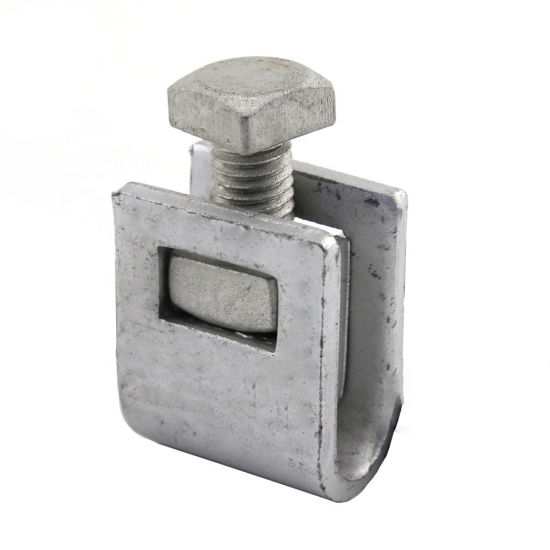
A B strand ground clamp is a specialized component used in overhead transmission cables to ground them. It is a type of electrical connector used to connect a grounding conductor to a B-strand. B strand ground clamps are sometimes known as messenger ground clamps. Its strong design enables it to withstand environmental conditions. B strand ground clamps are from high conductivity materials such as copper or aluminum. They ensure proper electrical conductivity. Its primary goal is to provide a dependable ground connection for safety and operational efficiency. It also helps to safeguard transmission cables and other equipment from lightning strikes. The clamp provides a robust and secure grounding connection while ensuring the reliability of the power transmission system.
The parts of a B-strand ground clamp
A B strand ground clamp consists of many critical components that work together to hold and effectively attach the grounding conductor to the B strand. Each of these components provides a strong, dependable, and conductive connections between the B strand and the grounding conductor. The correct set up of these components ensures the safety and effectiveness of overhead transmission lines. The following are the common components of a B strand ground clamp.
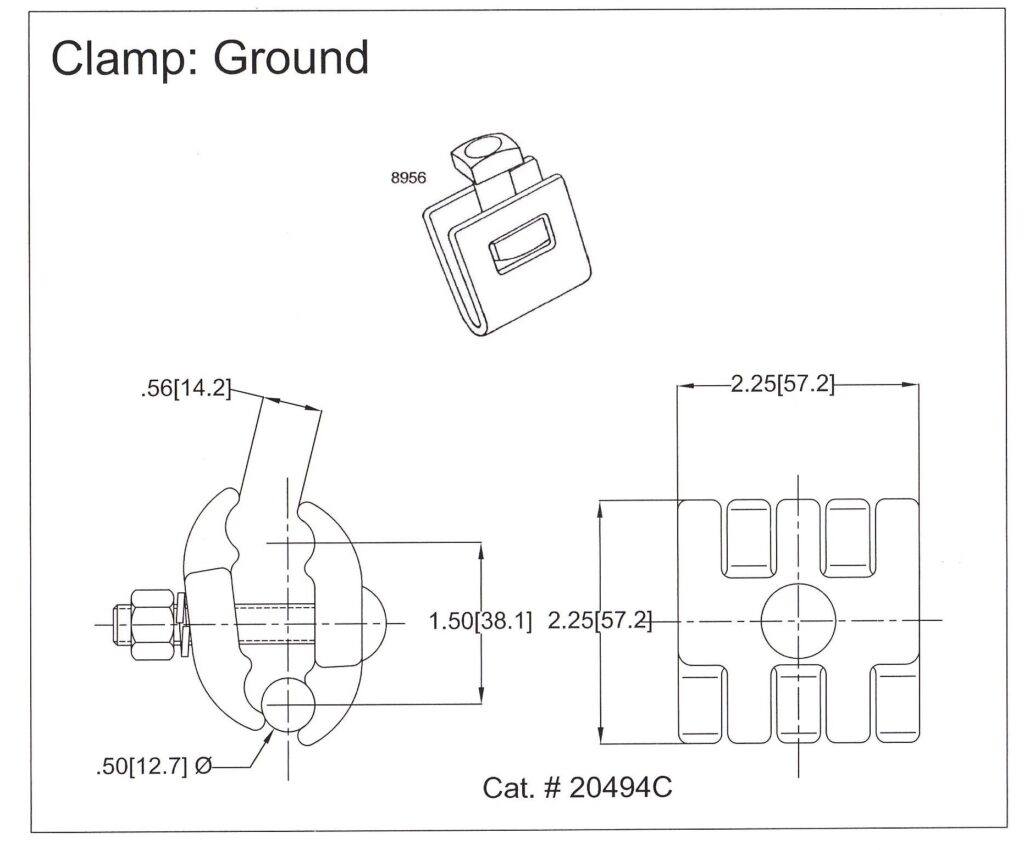
- Body – this is the main part of the B strand clamp made from high conductivity materials. These materials include copper, bronze or aluminum. Its function is to provide the base for other components and the connection point for the grounding conductor.
- Bolts and nuts – these helps to tighten the clamp onto the B strand and the grounding conductor. They ensure a secure mechanical connection. Common types include standard bolts, carriage bolts or set screws.
- Washer – this provides even pressure distribution when the bolts are tight. This is to prevent damage to the conductor and ensure a firm connection.
- Saddle – this fits over the B strand to provide a stable and secure contact surface. This is to ensure the clamp grips the B strand.
- Pressure bar – this distributes the pressure from bolts across the grounding conductor. This is to ensure a reliable electrical connection without damaging the conductor.
- Gripping teeth of grooves – the grooves integrate into the saddle or the body of the clamp. It enhances the grip on the B strand to prevent slippage and maintain a secure connection.
- Grounding conductor slot – this is a hole where the grounding conductor inserts. It ensures the grounding conductor stays in place for optimal conductivity.
- Corrosion resistant coating – this protects the metal parts of the clamp from environmental damage.
Important Features of the B Strand Ground Clamp
A B strand ground clamp has various qualities that make it ideal for grounding purposes. It includes characteristics that enable a solid, stable, and long-lasting grounding connection. These elements improve the safety and efficiency of electrical transmission systems. The following are the main characteristics of the B strand ground clamp.
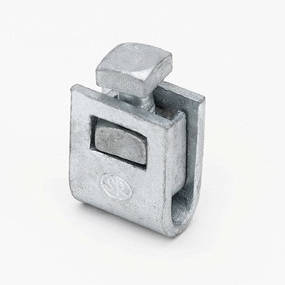
- Corrosion resistance – the clamps have coatings with anti-corrosive substances. These coatings include tin, zinc or special coatings. They protect the clamp from environmental factors such as moisture, salt and industrial pollutants.
- Robust construction – the grounding clamp has a design that allows it to withstand mechanical stresses. The stresses include vibrations, tensions and environmental conditions. They provide reliable performance even in such conditions.
- High conductivity – the ground clamps are from materials with high electrical conductivity. These materials ensure minimal resistance in the grounding connection.
- Secure grip – this is a mechanism including gripping teeth, grooves or serrated surfaces. They ensure a firm and stable connection to the B strand to prevent slippage and maintain electrical continuity.
- Ease of installation – the strand includes components like bolts, nuts and washers that ease quick and secure installation. This helps to reduce installation time and effort to make it easier for maintenance personnel.
- Mechanical strength – the B strand ground clamps are able to provide high mechanical strength and durability. This is to ensure long-term performance and reliability even under heavy mechanical loads.
- Versatility – the clamp also has designs to fit various sizes and types of B strands and grounding conductors. This allows it to find use in a wide range of applications and configurations.
- Pressure distribution – this includes a pressure bar to distribute pressure across the grounding conductor. This prevent damage to the conductor while ensuring a reliable electrical connection.
Fittings used with B-strand ground clamps
B strand ground clamps operate with a variety of fittings to provide a secure, efficient, and dependable grounding connection. All these attachments improve the clamp’s functionality and ease of installation. The components are as follows:
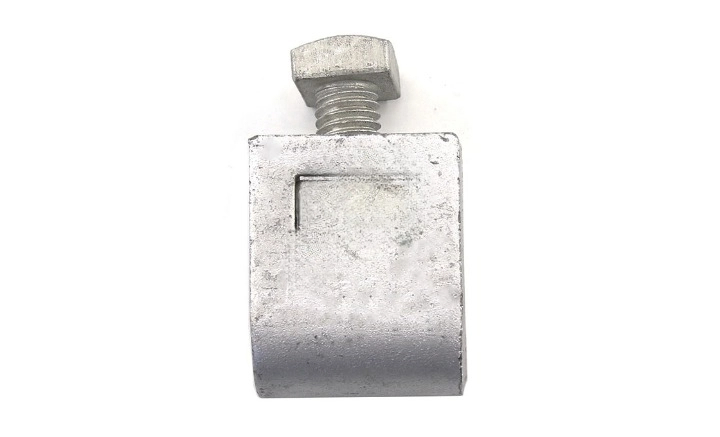
- Connectors and splices – these include compression connectors, split-bolt connectors or crimp connectors. They help to join grounding conductors or connect them to the other components in the system.
- Ground rods – these drive into the ground to provide a low-resistance path for electrical currents to dissipate into the earth.
- Grounding conductors – these include copper wire, aluminum wire or other conductive materials. They connect the B strand ground clamp to the grounding system. They also provide a path for electrical currents to safely dissipate into the ground.
- Grounding plates – these work with ground rods to increase the surface area in contact with the soil to improve efficiency.
- Bonding jumpers – these help to electrically connect different components of the grounding system. They help to ensure continuity and effective grounding.
- Compression tools – such tools include manual or hydraulic crimping tools. They help to attach connectors or splices to grounding conductors.
- Mounting hardware – these are to attach the B strand ground clamp and other grounding components to structures. They include screws, bolts, nuts and washers.
- Insulation and protective coverings – these includes heat-shrink tubing, electrical tape or insulating boots. This protects connections from environmental damage such as moisture or corrosion.
- Clamps and brackets – these help to secure grounding conductors and components in place. They include cable clamps, conduit clamps or mounting brackets.
Different types of B-strand grounding clamps
There are various types of B strand grounding clamps available to meet certain requirements and applications. Each type of B strand ground clamp has unique features and benefits that make it appropriate for various grounding applications. Also, consider various considerations while selecting the appropriate B strand ground clamp. This includes mechanical strength, ease of installation, and any unique requirements. The following are the most frequent types of B-strand ground clamps.
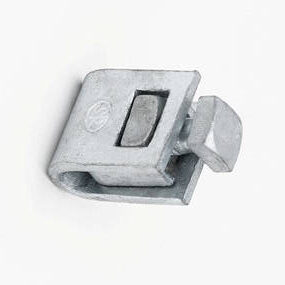
- Bolted ground clamps – this uses bolts to secure the clamp onto the B strand and grounding conductor. It best works for situations that need a strong mechanical connection.
- Compression ground clamps – these uses a compression tool to crimp the clamp onto the B strand and grounding conductor. It ensures a high strength and corrosion resistant connection.
- Parallel groove clamps – these feature two grooves that run parallel to each other where the B strand and grounding conductor attach. They help in splicing and taping conductors to ensure a secure connection.
- Split-bolt ground clamps – this comprises a split bolt that can tighten around the B strand and grounding conductor. They are suitable for joining two conductors in a secure and flexible manner.
- Piercing ground clamps – these use sharp teeth or points that pierce the insulation of the conductor to establish an electrical connection.
- U-bolt ground clamps – this features a U-shaped bolt that secure the B strand and grounding conductor together. They provide a strong and vibration resistant connection.
- C-clamp ground clamps – this C-shaped clamp tightens using a screw or bolt mechanism. It is easy to install and remove which makes versatile for various applications.
The performance traits of a B-strand ground clamp
There are many methods for evaluating the performance of the B strand ground clamp. The performance criteria ensure that grounding systems are both effective and reliable. The following are the performance characteristics of a B-strand ground clamp.
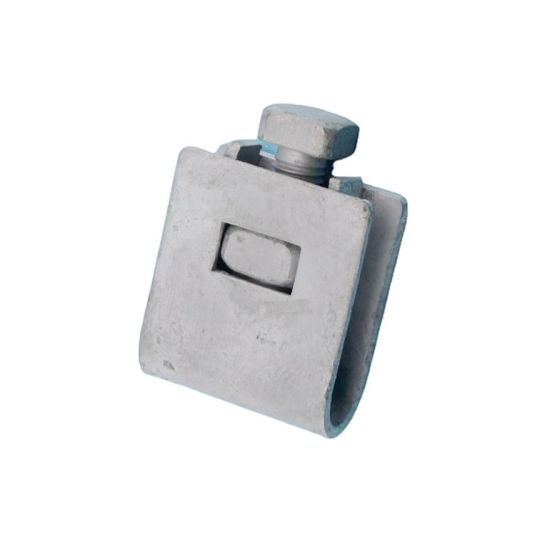
- Corrosion resistance – resistance to corrosion and environmental degradation extends the lifespan of the clamp.
- Mechanical strength – high mechanical strength ensures the clamps are able to withstand physical stresses. This is including tension, compression, and vibration.
- Electrical conductivity – high electrical conductivity ensures minimal resistance in the grounding connection.
- Thermal stability – this helps to maintain the structural integrity and electrical performance in extreme temperatures.
- Pressure distribution – even pressure distribution prevents damage to the conductor while ensuring a reliable electrical connection.
- Ease of installation – simple and quick installation reduces labor time, costs and reduces the risk of installation errors.
- Secure grip – strong gripping mechanism ensures a firm connection to the B strand and grounding conductor.
Frequently asked questions
A B strand ground clamp is an electrical connector designed to attach a grounding conductor to a B strand. It ensures a reliable grounding connection for safety and operational efficiency.
B strand ground clamps are from high-conductivity materials such as copper, bronze or aluminum. These materials ensure effective electrical conductivity and durability.
A B strand ground clamp helps protect the transmission lines from lightning strikes and electrical surges. This is by providing a reliable grounding connection.